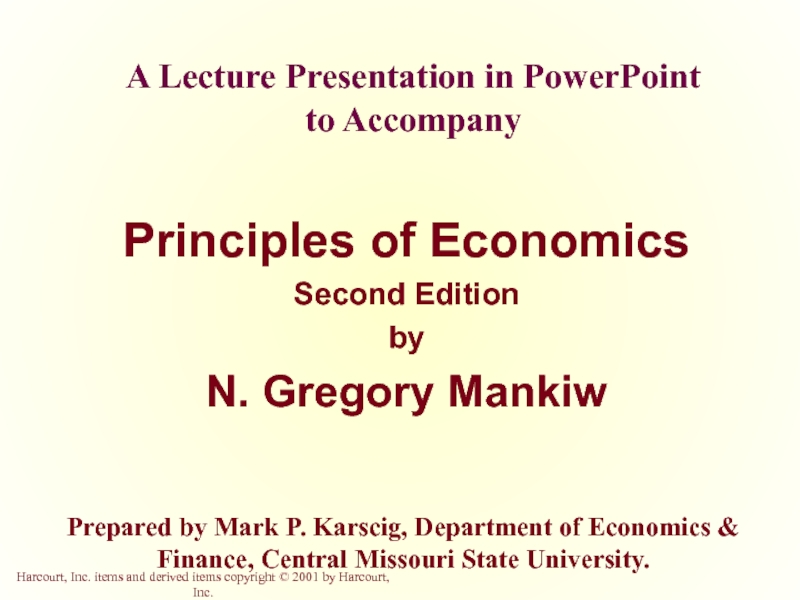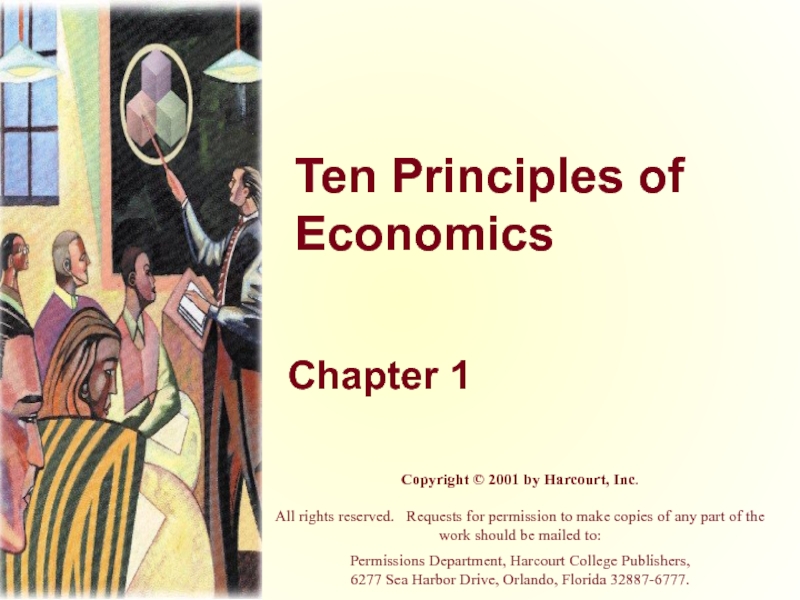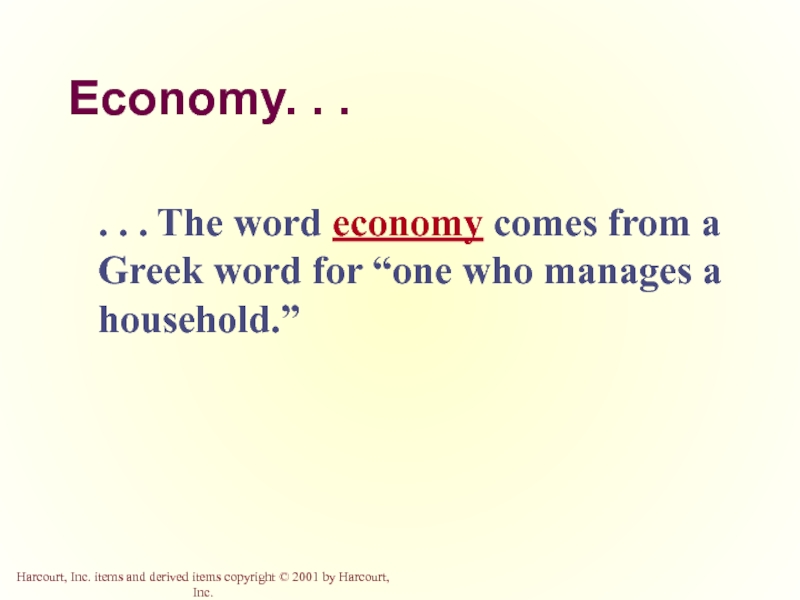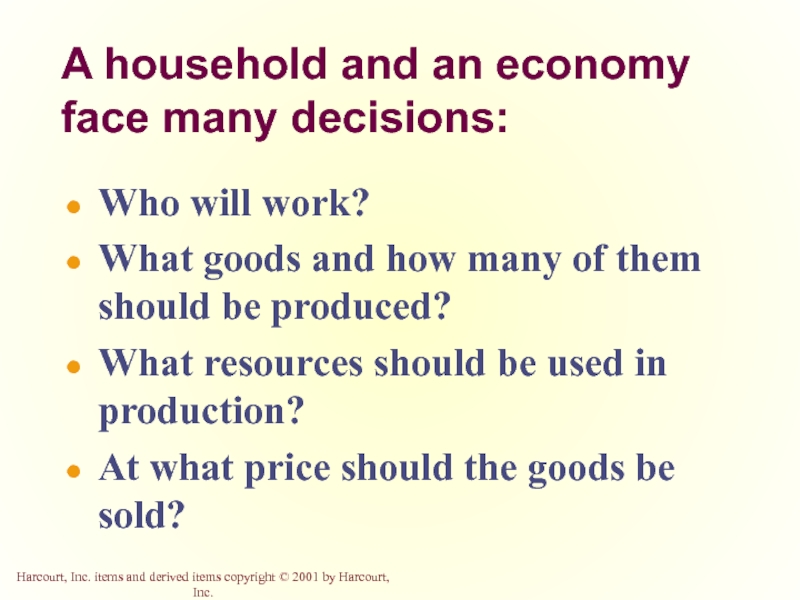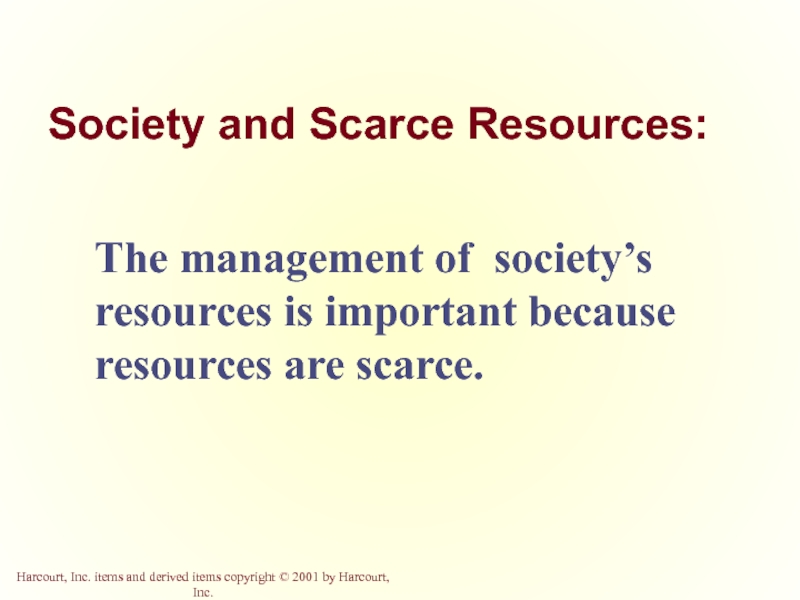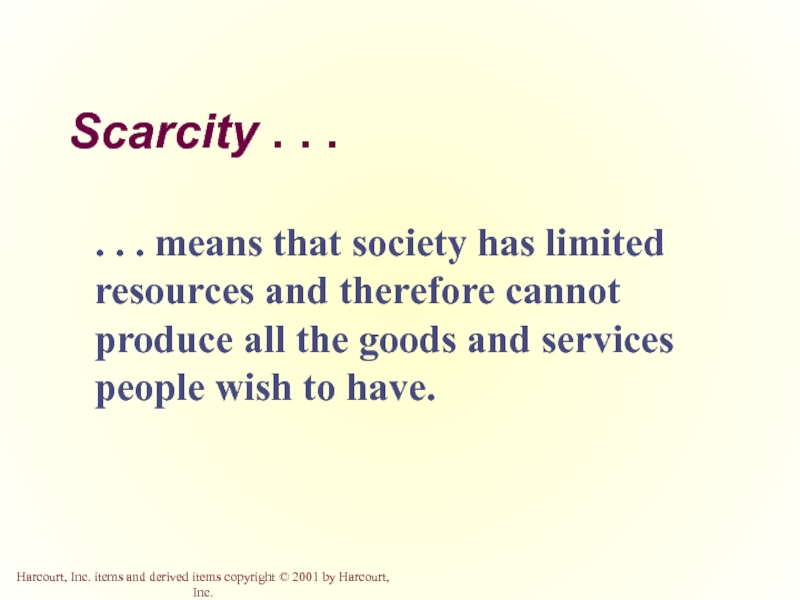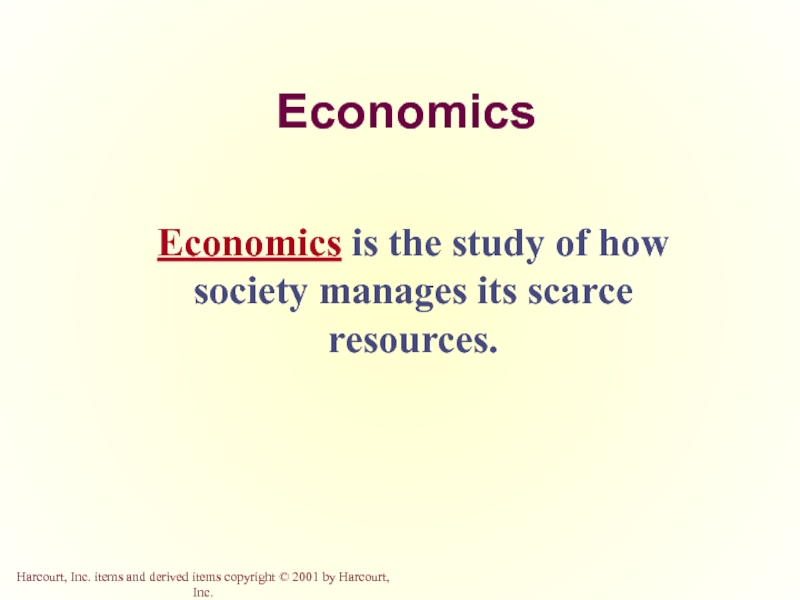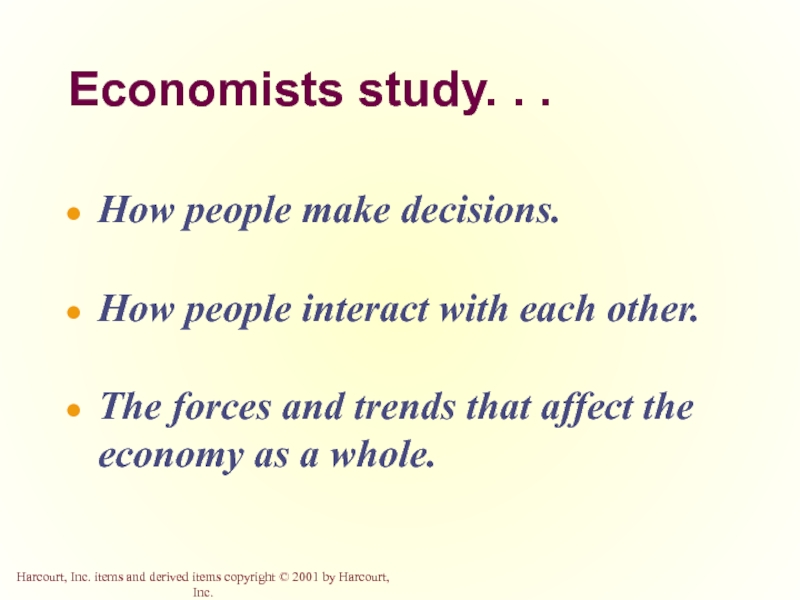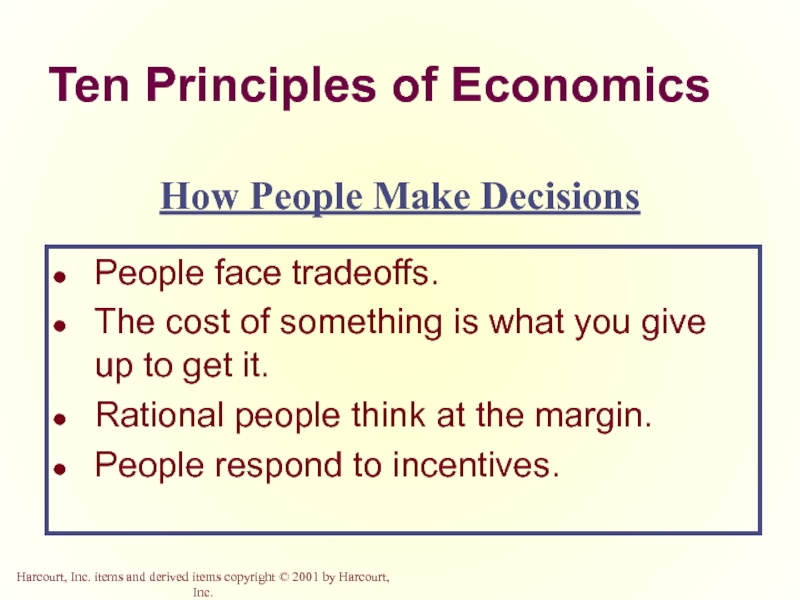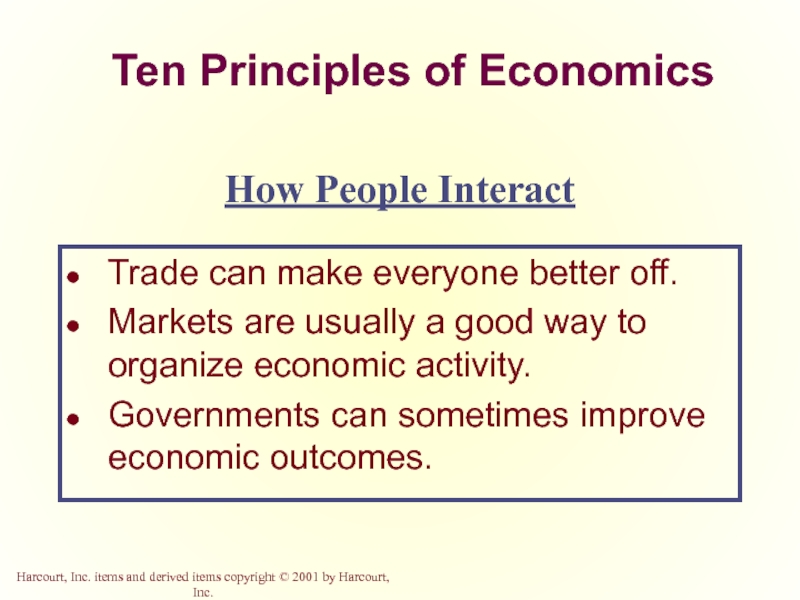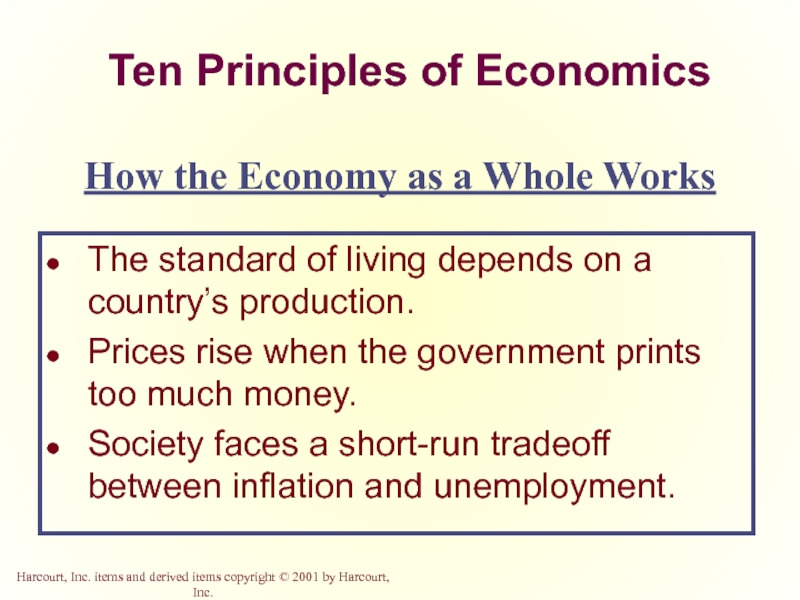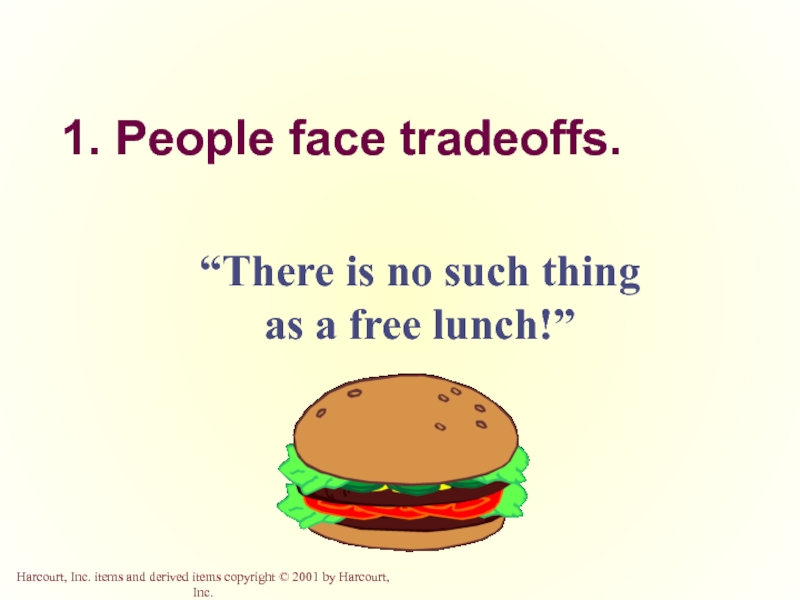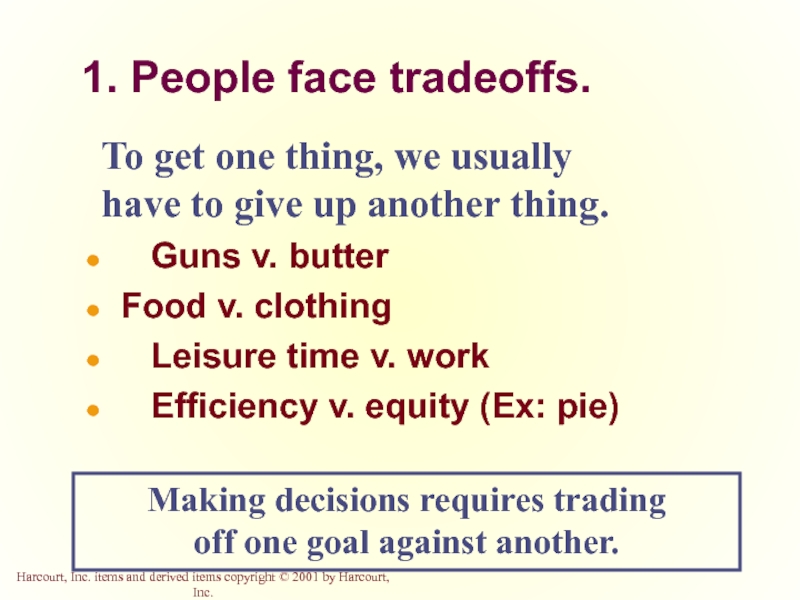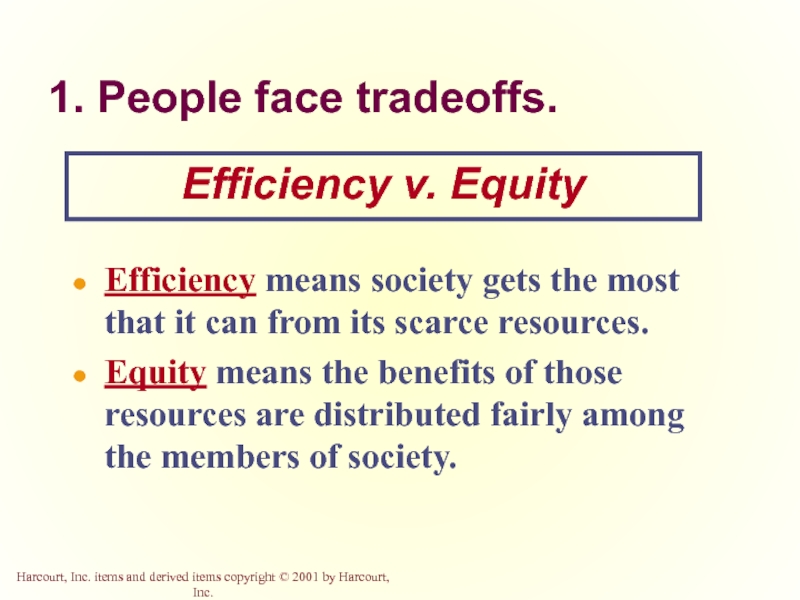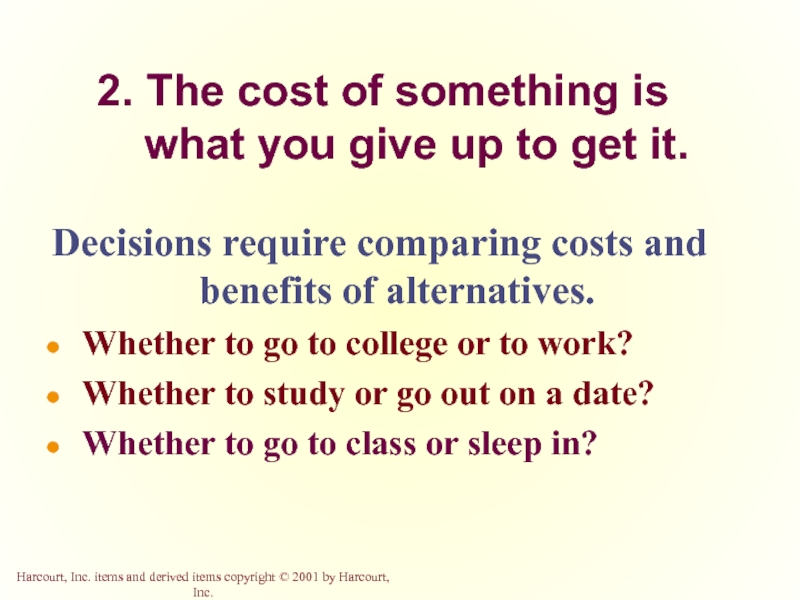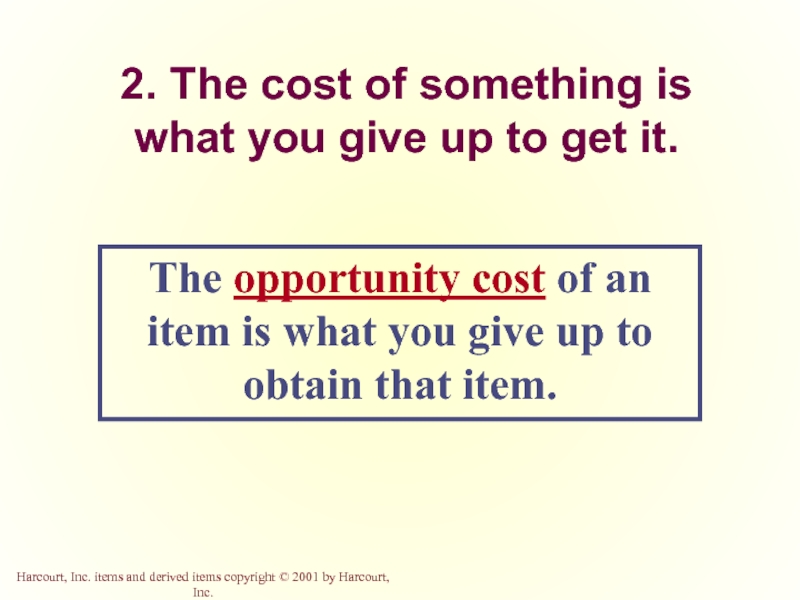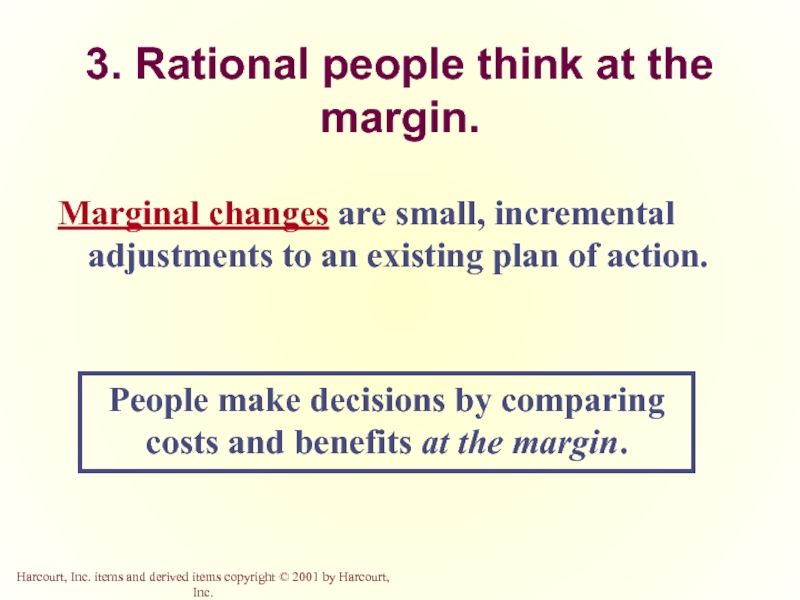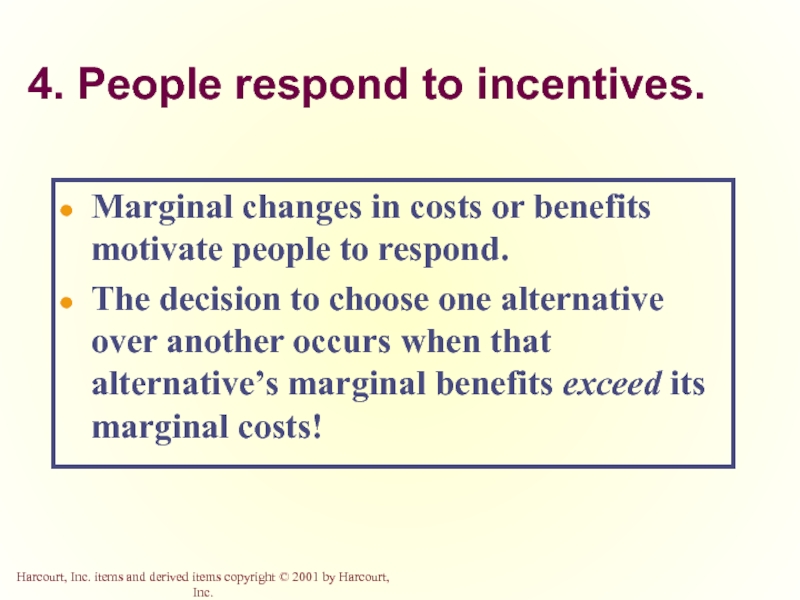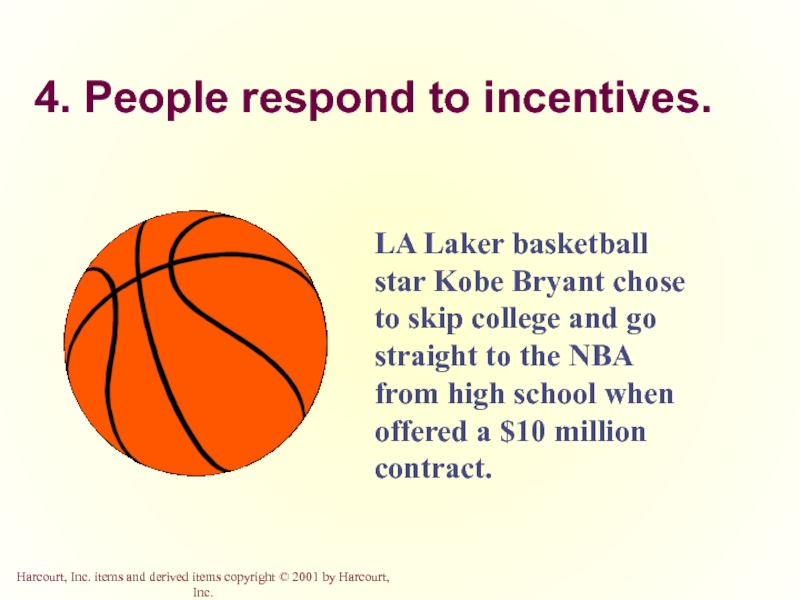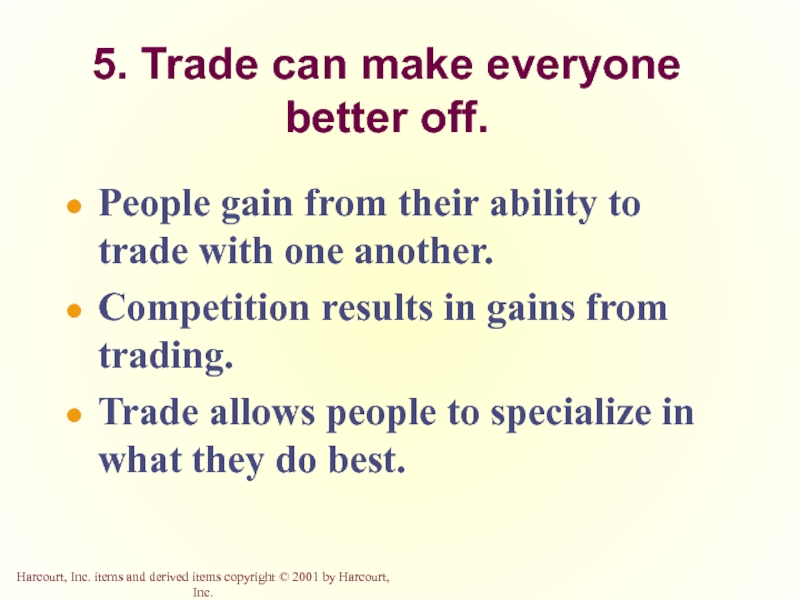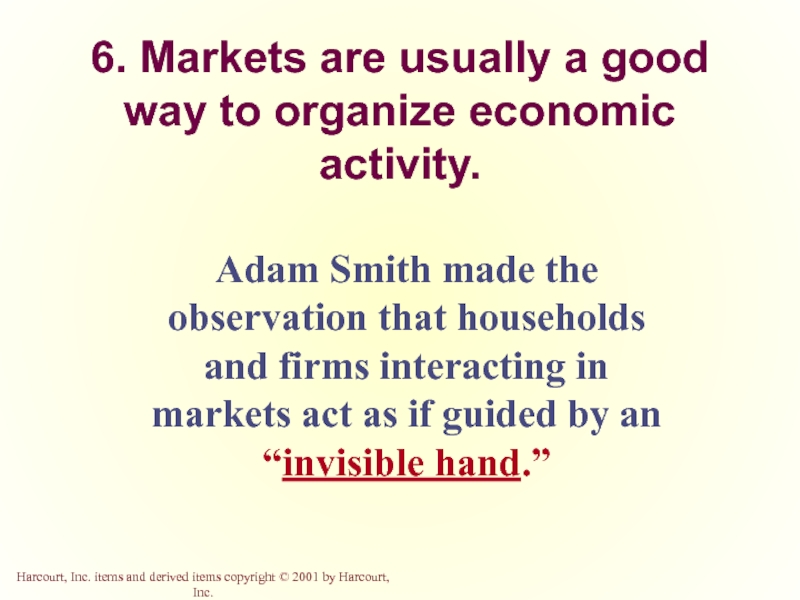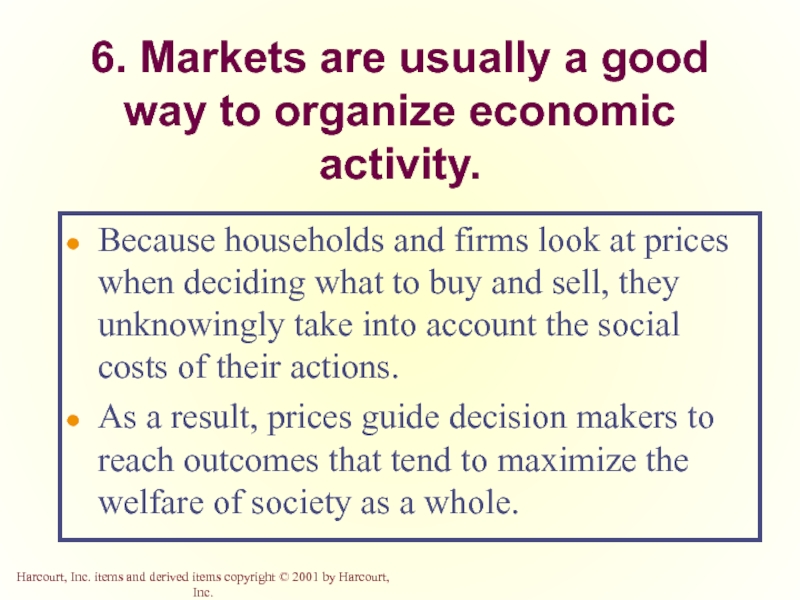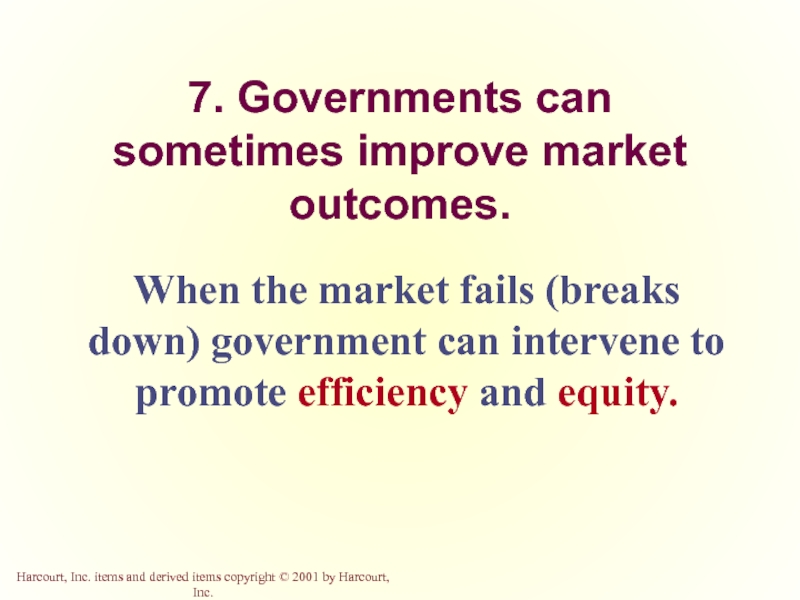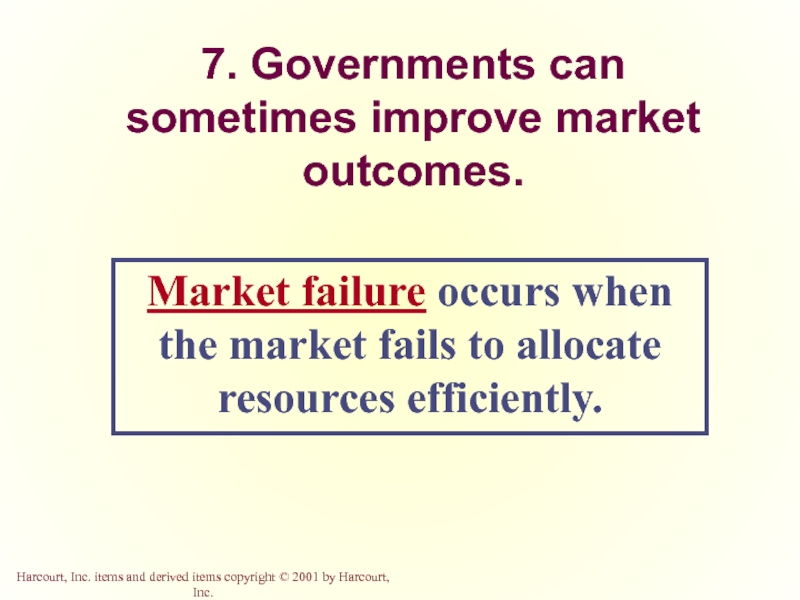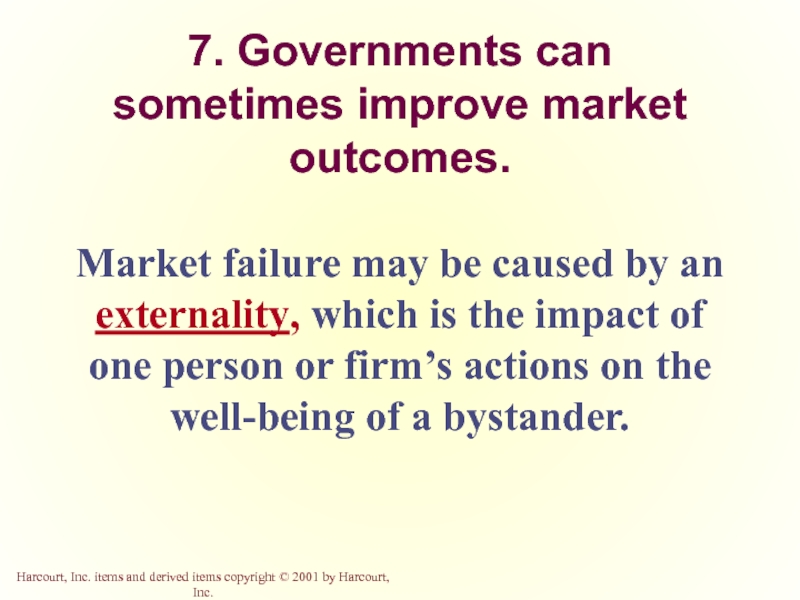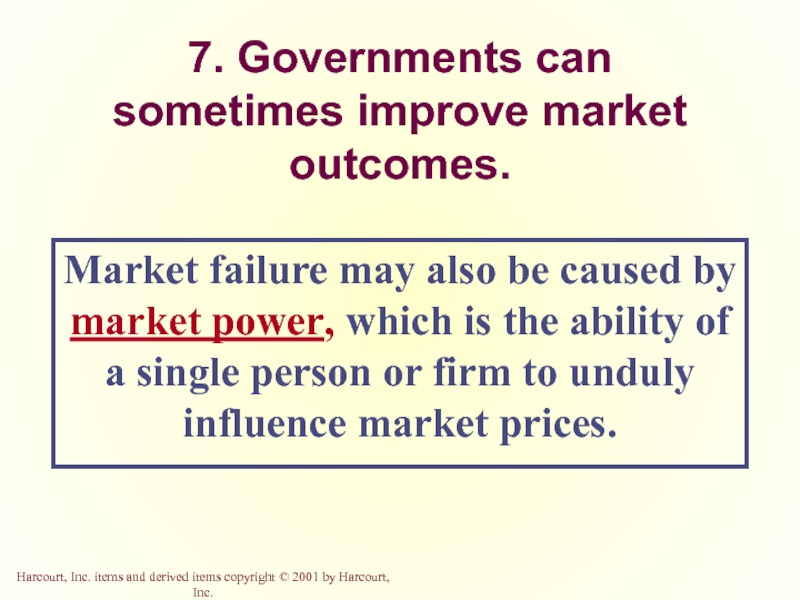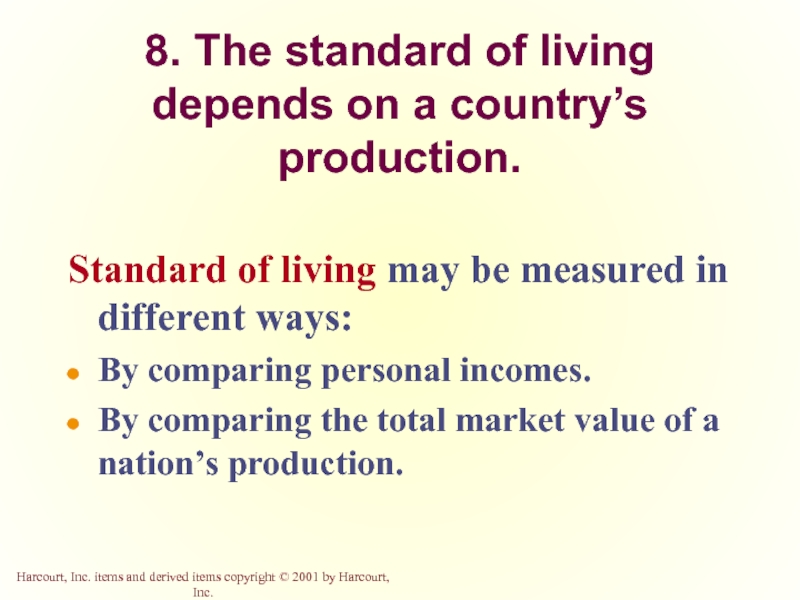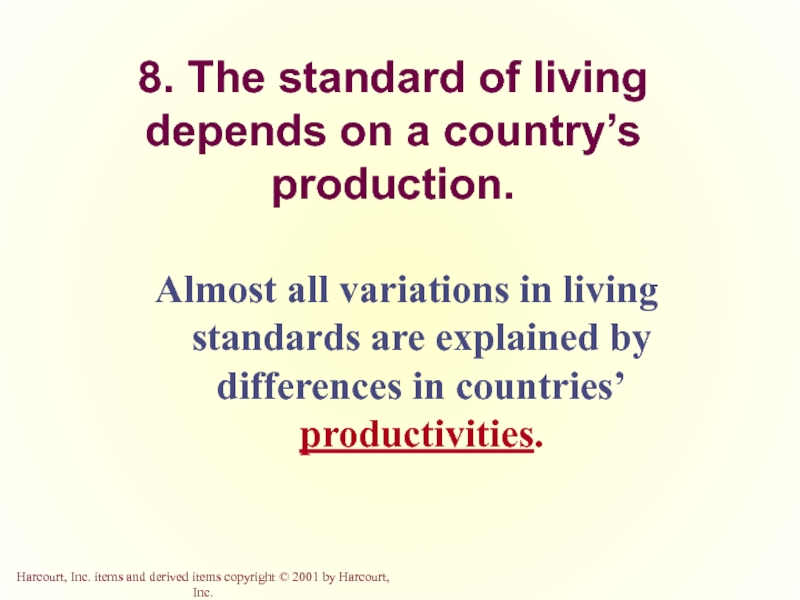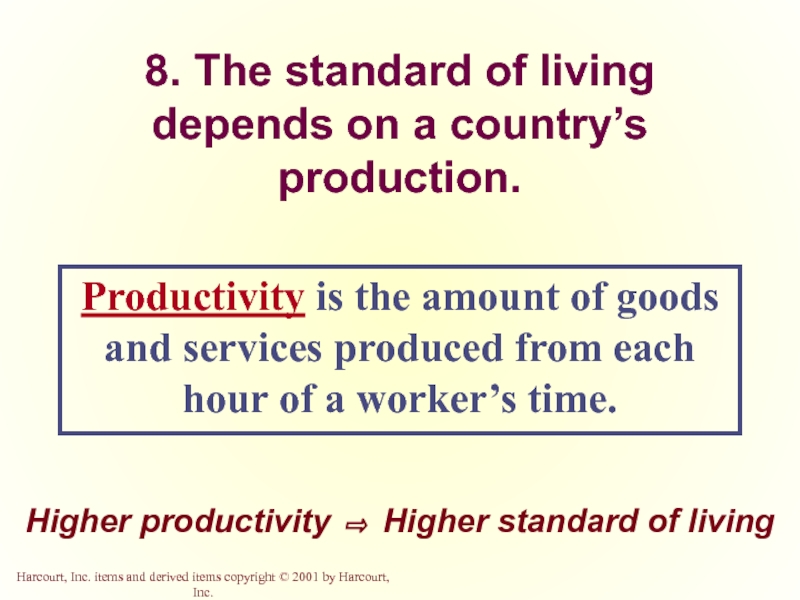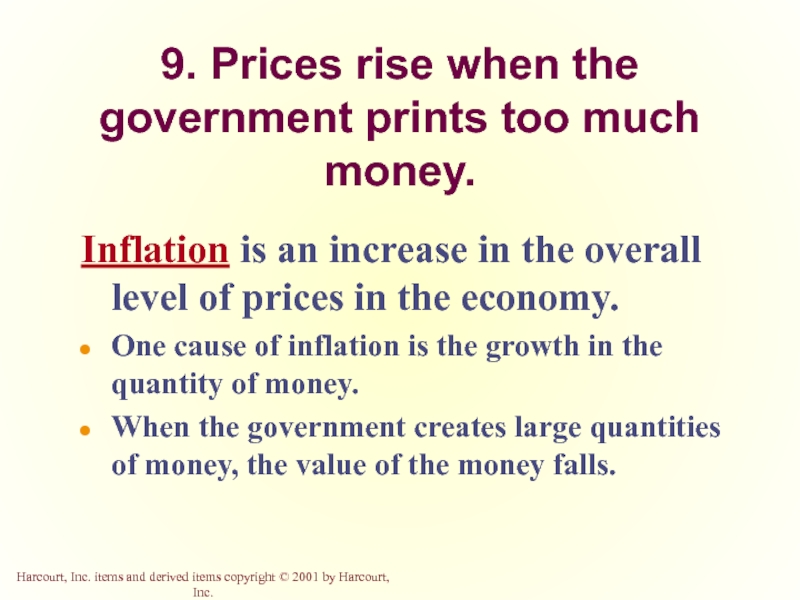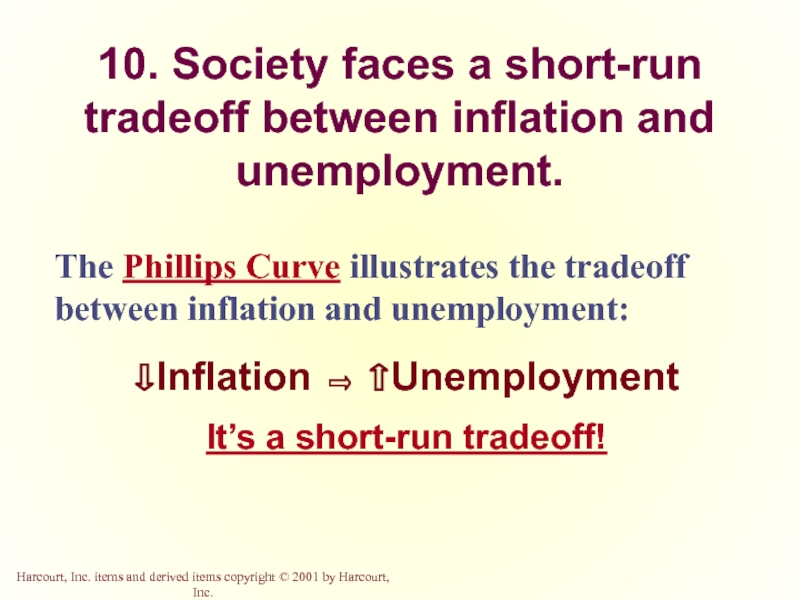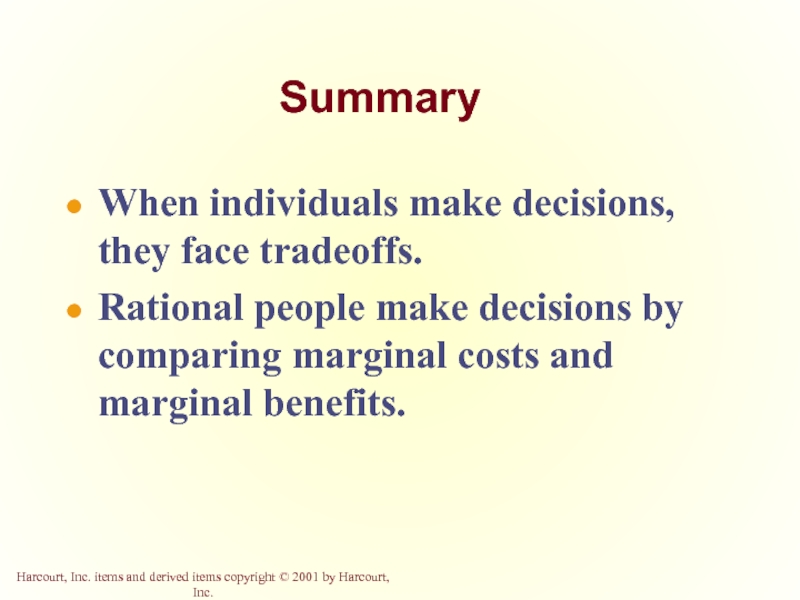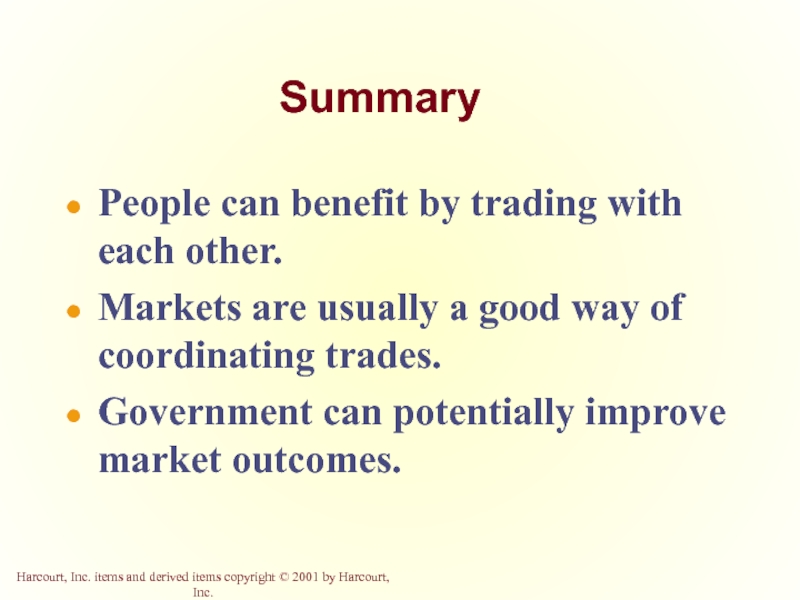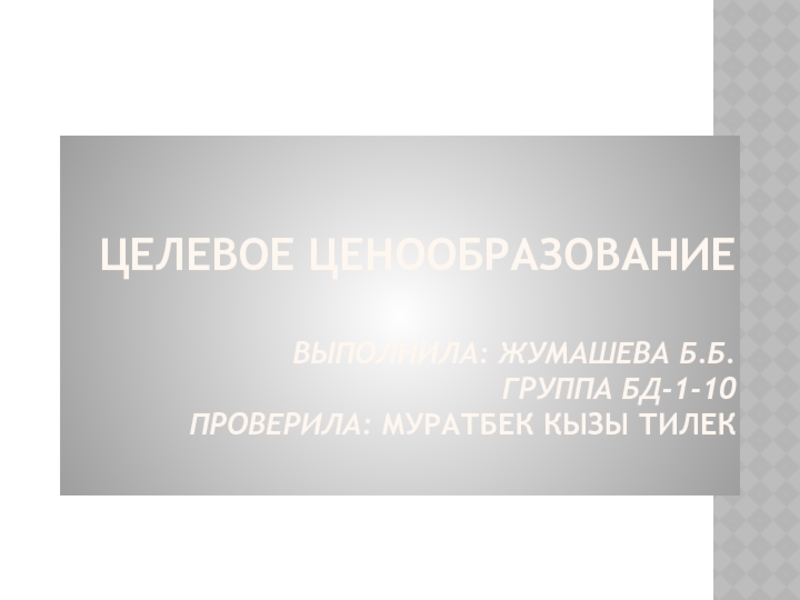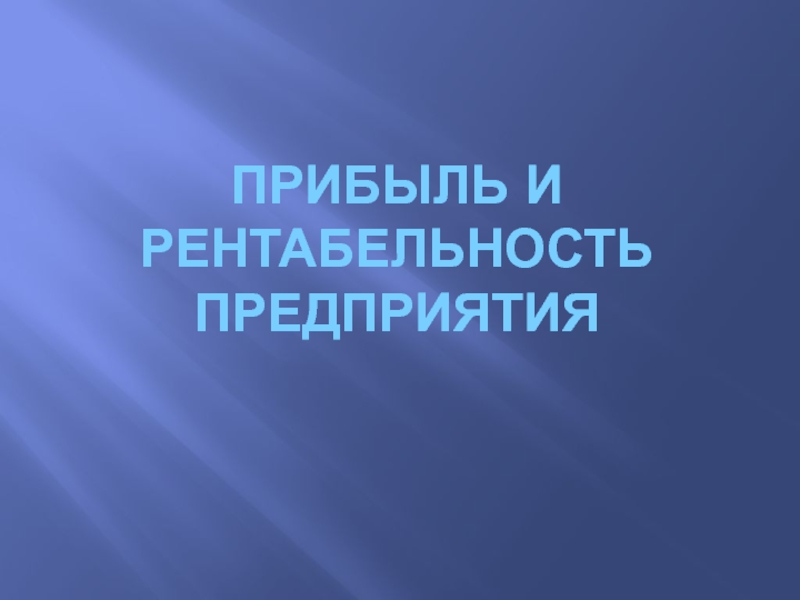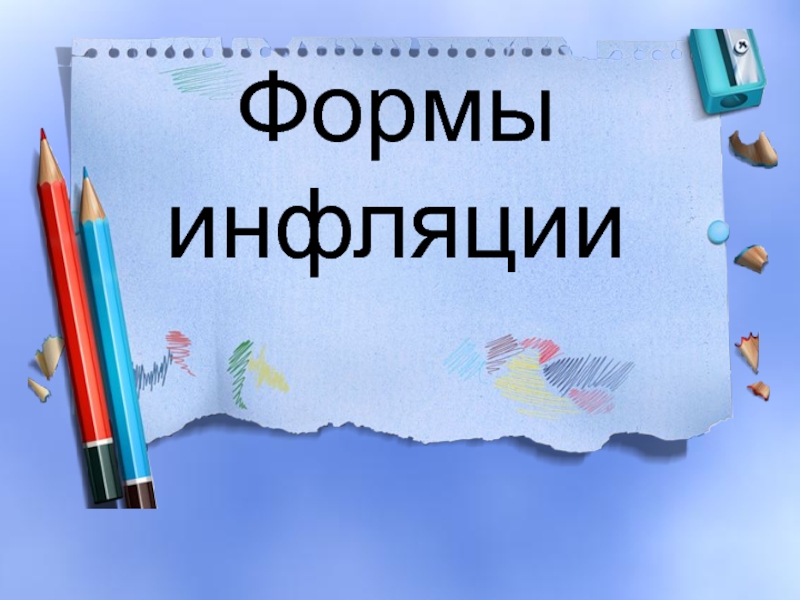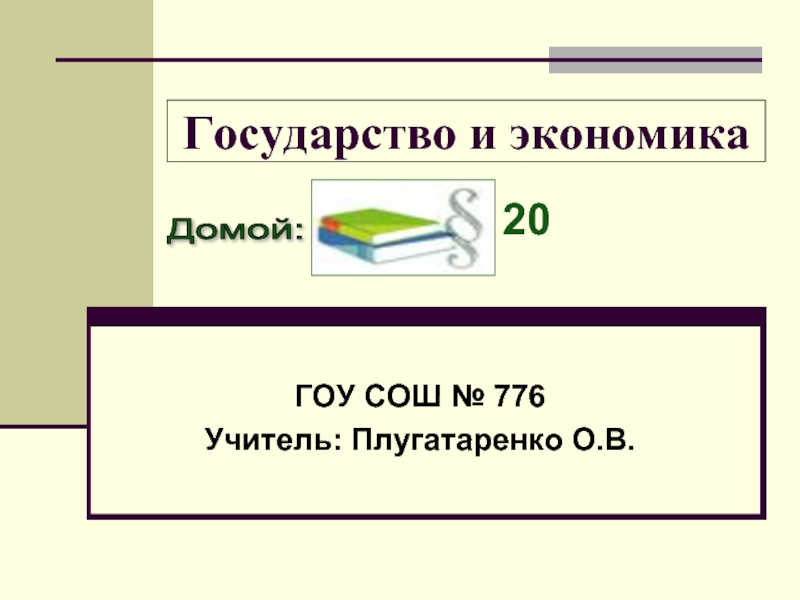Prepared by Mark P. Karscig, Department of Economics & Finance, Central Missouri State University.
- Главная
- Разное
- Дизайн
- Бизнес и предпринимательство
- Аналитика
- Образование
- Развлечения
- Красота и здоровье
- Финансы
- Государство
- Путешествия
- Спорт
- Недвижимость
- Армия
- Графика
- Культурология
- Еда и кулинария
- Лингвистика
- Английский язык
- Астрономия
- Алгебра
- Биология
- География
- Детские презентации
- Информатика
- История
- Литература
- Маркетинг
- Математика
- Медицина
- Менеджмент
- Музыка
- МХК
- Немецкий язык
- ОБЖ
- Обществознание
- Окружающий мир
- Педагогика
- Русский язык
- Технология
- Физика
- Философия
- Химия
- Шаблоны, картинки для презентаций
- Экология
- Экономика
- Юриспруденция
Principles of Economics презентация
Содержание
- 1. Principles of Economics
- 2. Ten Principles of Economics Chapter 1 Copyright
- 3. Economy. . . . .
- 4. A household and an economy face
- 5. Society and Scarce Resources: The management of society’s resources is important because resources are scarce.
- 6. Scarcity . . . . . .
- 7. Economics Economics is the study of how society manages its scarce resources.
- 8. Economists study. . . How people
- 9. Ten Principles of Economics People face tradeoffs.
- 10. Ten Principles of Economics Trade can make
- 11. Ten Principles of Economics The standard of
- 12. 1. People face tradeoffs. “There is no such thing as a free lunch!”
- 13. 1. People face tradeoffs. To get one
- 14. 1. People face tradeoffs. Efficiency means society
- 15. 2. The cost of something is what
- 16. 2. The cost of something is what
- 17. 3. Rational people think at the margin.
- 18. 4. People respond to incentives. Marginal changes
- 19. LA Laker basketball star Kobe Bryant chose
- 20. 5. Trade can make everyone better off.
- 21. 6. Markets are usually a good way
- 22. 6. Markets are usually a good way
- 23. 6. Markets are usually a good way
- 24. 7. Governments can sometimes improve market outcomes.
- 25. 7. Governments can sometimes improve market outcomes.
- 26. 7. Governments can sometimes improve market outcomes.
- 27. 7. Governments can sometimes improve market outcomes.
- 28. 8. The standard of living depends on
- 29. 8. The standard of living depends on
- 30. 8. The standard of living depends on
- 31. 9. Prices rise when the government prints
- 32. 10. Society faces a short-run tradeoff between
- 33. Summary When individuals make decisions, they face
- 34. Summary People can benefit by trading with
- 35. Summary A country’s productivity determines its living
Слайд 1A Lecture Presentation in PowerPoint
to Accompany
Principles of Economics
Second Edition
by
N. Gregory
Слайд 2Ten Principles of Economics
Chapter 1
Copyright © 2001 by Harcourt, Inc.
All rights
Permissions Department, Harcourt College Publishers, 6277 Sea Harbor Drive, Orlando, Florida 32887-6777.
Слайд 3Economy. . .
. . . The word economy comes
Слайд 4A household and an economy
face many decisions:
Who will work?
What goods
What resources should be used in production?
At what price should the goods be sold?
Слайд 5Society and Scarce Resources:
The management of society’s resources is important because
Слайд 6Scarcity . . .
. . . means that society has limited
Слайд 8Economists study. . .
How people make decisions.
How people interact with
The forces and trends that affect the economy as a whole.
Слайд 9Ten Principles of Economics
People face tradeoffs.
The cost of something is what
Rational people think at the margin.
People respond to incentives.
How People Make Decisions
Слайд 10Ten Principles of Economics
Trade can make everyone better off.
Markets are usually
Governments can sometimes improve economic outcomes.
How People Interact
Слайд 11Ten Principles of Economics
The standard of living depends on a country’s
Prices rise when the government prints too much money.
Society faces a short-run tradeoff between inflation and unemployment.
How the Economy as a Whole Works
Слайд 131. People face tradeoffs.
To get one thing, we usually have to
Guns v. butter
Food v. clothing
Leisure time v. work
Efficiency v. equity (Ex: pie)
Making decisions requires trading
off one goal against another.
Слайд 141. People face tradeoffs.
Efficiency means society gets the most that it
Equity means the benefits of those resources are distributed fairly among the members of society.
Efficiency v. Equity
Слайд 152. The cost of something is what you give up to
Decisions require comparing costs and benefits of alternatives.
Whether to go to college or to work?
Whether to study or go out on a date?
Whether to go to class or sleep in?
Слайд 162. The cost of something is what you give up to
The opportunity cost of an item is what you give up to obtain that item.
Слайд 173. Rational people think at the margin.
Marginal changes are small, incremental
People make decisions by comparing costs and benefits at the margin.
Слайд 184. People respond to incentives.
Marginal changes in costs or benefits motivate
The decision to choose one alternative over another occurs when that alternative’s marginal benefits exceed its marginal costs!
Слайд 19LA Laker basketball star Kobe Bryant chose to skip college and
4. People respond to incentives.
Слайд 205. Trade can make everyone better off.
People gain from their ability
Competition results in gains from trading.
Trade allows people to specialize in what they do best.
Слайд 216. Markets are usually a good way to organize economic activity.
In
Firms decide who to hire and what to produce.
Слайд 226. Markets are usually a good way to organize economic activity.
Adam
Слайд 236. Markets are usually a good way to organize economic activity.
Because
As a result, prices guide decision makers to reach outcomes that tend to maximize the welfare of society as a whole.
Слайд 247. Governments can sometimes improve market outcomes.
When the market fails (breaks
Слайд 257. Governments can sometimes improve market outcomes.
Market failure occurs when the
Слайд 267. Governments can sometimes improve market outcomes.
Market failure may be caused
Слайд 277. Governments can sometimes improve market outcomes.
Market failure may also be
Слайд 288. The standard of living depends on a country’s production.
Standard of
By comparing personal incomes.
By comparing the total market value of a nation’s production.
Слайд 298. The standard of living depends on a country’s production.
Almost all
Слайд 308. The standard of living depends on a country’s production.
Productivity is
Higher productivity ⇨ Higher standard of living
Слайд 319. Prices rise when the government prints too much money.
Inflation is
One cause of inflation is the growth in the quantity of money.
When the government creates large quantities of money, the value of the money falls.
Слайд 3210. Society faces a short-run tradeoff between inflation and unemployment.
The Phillips
⇩Inflation ⇨ ⇧Unemployment
It’s a short-run tradeoff!
Слайд 33Summary
When individuals make decisions, they face tradeoffs.
Rational people make decisions by
Слайд 34Summary
People can benefit by trading with each other.
Markets are usually a
Government can potentially improve market outcomes.
